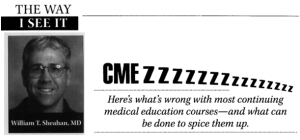 My patient Pat damaged a knee skiing abroad, had it fixed locally, and limped home. “Should I keep on taking these tablets they gave me, Doc? They’re to help me sleep.” I suggested not. They’d given Pat one of the so called “z drugs”—zaleplon, zolpidem, or zopiclone, I forget which. Not for long enough, I hoped, to induce withdrawal symptoms.
My patient Pat damaged a knee skiing abroad, had it fixed locally, and limped home. “Should I keep on taking these tablets they gave me, Doc? They’re to help me sleep.” I suggested not. They’d given Pat one of the so called “z drugs”—zaleplon, zolpidem, or zopiclone, I forget which. Not for long enough, I hoped, to induce withdrawal symptoms.
They’re all short acting agonists at GABAA receptors, with actions—including adverse effects—similar to those of the benzodiazepines, which act allosterically via GABAA receptors by enhancing linked chloride channel activity. Benzodiazepines are formed by joining a benzene ring and a diazepine ring. It’s not therefore surprising that each has a z in its name: most of them end in –azepam or –azolam. Flumazenil, a benzodiazepine receptor antagonist, follows suit. But of over 60 benzodiazepines in the World Health Organization’s lists of recommended and proposed International Nonproprietary Names (INNs) only one begins with a z: zolazepam.
Zopiclone, which first appeared in 1978, is a cyclopyrrolone, and there is no apparent reason why its name should start with a z. Zolpidem (1985) is an imidazopyridine and zaleplon (1993) a pyrazolopyrimidine; the z’s are there but not especially prominently. However, it cannot have done these hypnotics any harm to have names beginning with a z. After all, in English the sound zzz is reminiscent of the snoring sound that occurs during sleep. The collective term “z drugs” started to emerge in 2004.
Hiss like a snake—sssss. Now phonate as you do it—zzzzz. The hissing phoneme s is the voiceless alveolar fricative and z is the voiced version of s. In his journal of 1852, Henry David Thoreau called the noise made by locusts “z-ing.” Later uses described noises made by bats and saws. The first recorded reference to a human noise, given in the Oxford English Dictionary, is in H G Wells’s novel Tono-Bungay (1909), which is about a patent medicine (“slightly injurious rubbish at one-and-three half-pence a bottle”), doubtless catching the then current fashion for such nostra. But it doesn’t refer to sleeping. The narrator, George Ponderevo, describes his uncle Edward’s way of speaking: “I watched . . . the play of his lips—they were a little oblique and there was something ‘slipshod’ . . . about his mouth so that he lisped and sibilated . . . He had a way of drawing air in at times through his teeth that gave a whispering zest to his speech. It’s a sound I can only represent as a soft Zzzz.” Reminiscent perhaps of the unsettling sound made by Anthony Hopkins in Silence of the Lambs. Not like the zzz produced by pushing air out.
“Snooze,” “doze,” and “drowse” have the z sound in them, but it was not until about 1920 that zzz came to be used to describe the sound made by snoring, or simply to indicate that a cartoon character is asleep. This convention is now international, even though not all languages pronounce z the same—German (ts) and Castilian Spanish (th), for example.
The verb to zizz, to sleep, dates from the 1940s and to get/bag/cop/catch some z’s from the 1960s. Zizz is usually intransitive (to zizz or zizz off), but there is a good example of the transitive use in Kyril Bonfiglioli’s novel Don’t Point That Thing at Me (1972): “I zizzed away the worst of the afternoon, awaking some three hours later with a mighty thirst.” Incidentally, if you found the recent movie Mortdecai, with Johnny Depp, written by an unrelated namesake of mine, zizzingly soporific (“Aggressively strange and wilfully unfunny” said critics), be assured that Bonfiglioli’s books are considerably better and very funny.
Private Eye on 4 November 1983, cited in OED, published a 42-z chain: “Once you have hit on a commercial product you just go on producing more of the same, over and . . . zzzz . . . over and . . . zzzz . . . over and . . . zzzzzzzzzzzzzzzzzzzzzzzzzzzzzzzzzzzzzzzzzz.” They could have been referring to the z drugs.
The longest string of z’s I have found in the biomedical literature is in the title of an excellent commentary in Medical Economics (figure). The odd thing about the title is that the z’s are shown getting smaller and dropping off, like someone dropping off to sleep. But surely the zizzing of sleep gets louder with time?
That example had 15 z’s, which is why I decided to use 16 in the title of this piece :>)
From Medical Economics 26 Apr 2002; 79(8):50
Jeffrey Aronson is a clinical pharmacologist, working in the Centre for Evidence Based Medicine in Oxford’s Nuffield Department of Primary Care Health Sciences. He is also president emeritus of the British Pharmacological Society.
Competing interests: None declared.

